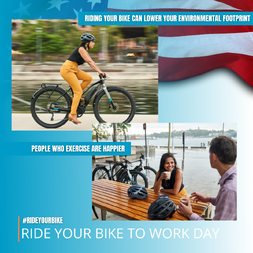Sustainable Strategies
Developing minimal waste bike packaging
After more than 10 years of shipping bikes directly to rider’s doors, we have been perfecting the way we pack our bikes to achieve a final product that is not only freight-proof and home assembly friendly - it also cares for the environment.
We pride ourselves on the way we mechanically check and carefully pack each and every one of our bikes. This is the result of years of collaboration with the factories to ensure minimal waste is created, while keeping the bikes safe and sound during transit.
Furthermore, we have incorporated the use of reusable packaging devices, such as the foam & straps and protectors for rotor, hub, crank arms, rear derailleur, and front axle, that can be kept and reused for when transporting your bike. In other words, almost everything you get inside a Bikes Online box can be either recycled, reused or ridden.
By developing our own packaging standard and prioritising recycled & recyclable materials, we have dramatically reduced the amount of protective material that is required and will inevitably go to landfill. On our way to a zero-plastic future, in the course of 3 years, we have decreased the use of plastic components in our packaging by 50% and aim to have fully recyclable and reusable packaging by 2025.
(2).jpg)
Investing in recyclable, compostable, or reusable product packaging
With over 100 small goodies leaving our warehouse each day, we couldn’t stop the sustainability efforts at our bike packaging.
For this reason, we have switched to compostable satchel bags in place of the old plastic satchels, a compostable tape that breaks down into a natural fertilizer in around 60 days, hex-wrap constructed from 100% recyclable paper and even compostable shipping labels.
This way, instead of creating waste and landfill, we are facilitating and encouraging recycling while providing the Earth with beneficial nutrients as the compostable components break down, ultimately making the world a better place to live and ride.
(3).png)
(3).png)
Cutting waste out of your manufacturing process
We continually and relentlessly work with our factories in order to reduce waste production and therefore the environmental impact from all stages of manufacturing.
Practices like efficient inventory management, labelling and organising the warehouse, adopting a closed loop manufacturing system by sorting, recovering & reusing raw materials and consumables, establishing preventive maintenance schedules and minimising packaging and water usage have helped us achieve a more sustainable manufacturing process and reduce waste disposal by 25% in the last 3 years.
.jpg)
.jpg)
Finding ways to reduce your carbon footprint in shipping and logistic
When striving to reduce the company’s freight carbon footprint, choosing environmentally friendly shipping methods is a crucial decision to make. Evidently, bikes coming from overseas can only arrive by air or water, and the environmental impact of each of these options is very distinct. In a nutshell, air freight is a lot faster but also a lot more environmentally harmful than water freight. That said, many factors will weigh in this decision, especially considering supply chain disruptions and unforeseen demand due to the Covid-19 pandemic. Through thorough logistic management, we were able to prioritise and maintain our water shipping schedules for 100% of our product ranges, to inflict as minimum climate impact as possible, while continuing to provide our riders with a healthy stock of all the products that they needed, at any given time.
(2).png)
Other high-impact green initiatives we are putting in place are:
- Utilising Green Energy in our office and warehouse spaces
- Recycling 80% of the waste produced in-house
- Choosing biodegradable washing supplies and consumables in the workshop operations
- Upcycling or donating unsold stock or marketing samples
- Setting up the Ex-demo Bike Program to upcycle returned bikes
- Promoting cycling as a primary way of urban transport within our community
Leave a comment
- Training Tips for a Beginner Cyclist
- Industry Reviews
- Bikepacking 101
- Worth-it Blogs EP#2: Hardtail Hitters
- Bikes Online Does Sea Otter
- EWS #5: Burkville
- Drop bar Buyer's Guide
- The Bicycles Online's Company Fitness Challenge
- Mountain Bikes Buyer's Guide
- Sustainable Strategies
- Worth-it Blogs EP#3: Budget Hardtail Upgrades
- Commuter Bike Guide
- Pinned With Polygon | The gang goes to Crankworx
 USA
USA AUS
AUS
























